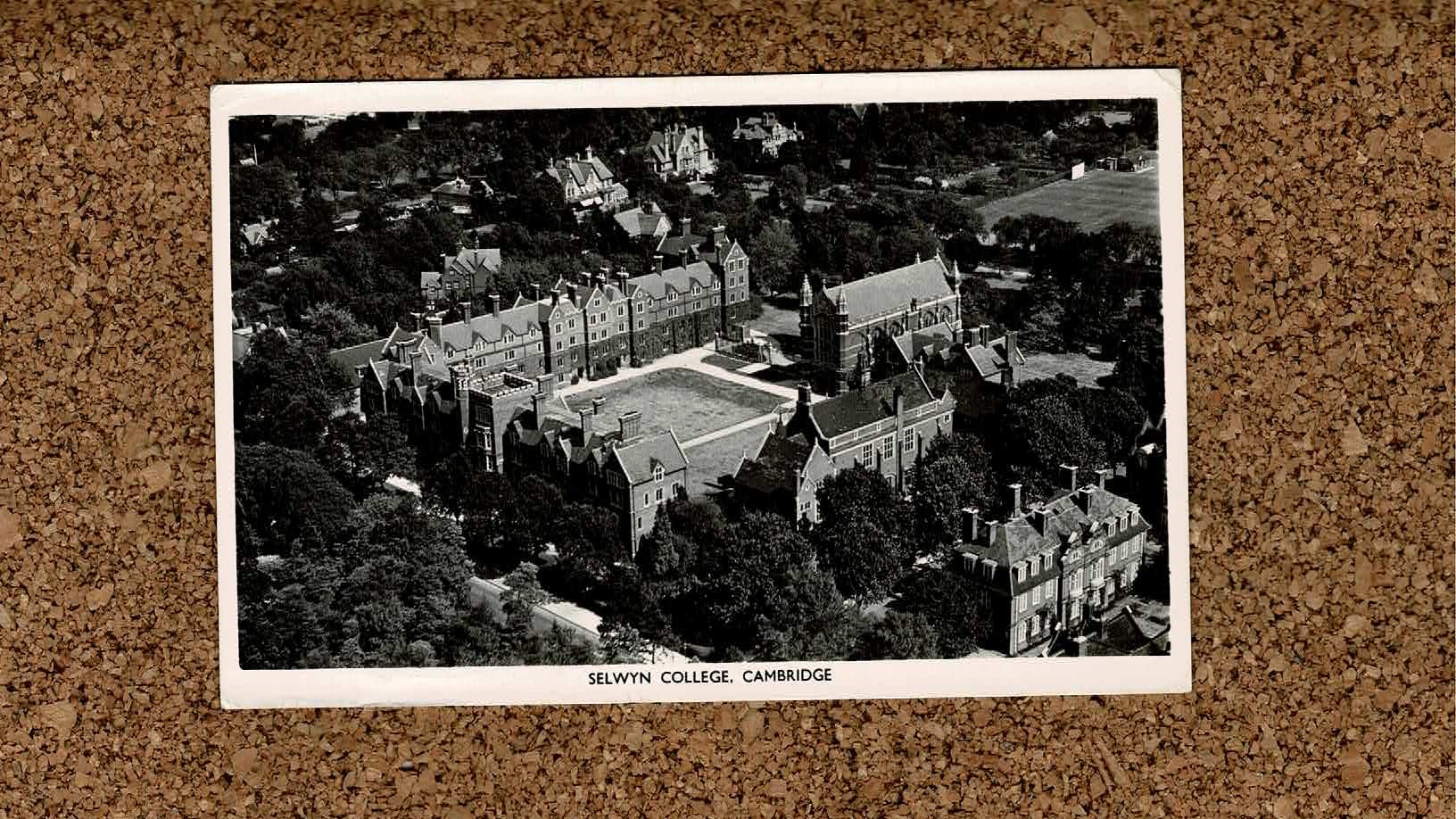Greetings from Cambridge!
Today’s card shows Selwyn College, which although new by the standards of the ancient university, has its fair share of history.
To understand Selwyn’s origins, we need to know a little about the man after whom the College was named – George Augustus Selwyn.
Selwyn died on 11 April 1878. Here’s the Scotsman’s notice the following day:
DEATH OF THE BISHOP OF LICHFIELD. —The Right Rev. George Augustus Selwyn, nineteenth Bishop of Lichfield, died yesterday afternoon. The Bishop, who has been seriously ill for some time, was born at Richmond, near London, in 1809. His father was a barrister and a Q.C., and his brother was the late Lord-Justice Selwyn. He was educated at Eton and at St John’s College, Cambridge, where he took his M.A. degree in 1834, and also held a fellowship. He was a private tutor at Eton from 1831 to 1841, and curate of Windsor from 1839 to 1841, in which latter year had accepted the arduous position of first taking charge of the Bishopric of New Zealand. For sixteen years Dr Selwyn superintended the whole of the extensive See, and in fulfilment of his duties undertook many journeys among the islands of the South Pacific, and gained universal esteem throughout his diocese as a hard-working, broad-spirited, and truly missionary bishop. In 1857 Dr Selwyn succeeded in procuring a division of the See; and ten years later, recognition of his labours was accorded in his translation to the diocese of Lichfield. In Church politics the late Bishop belonged to the moderate Evangelical school. He was exceedingly popular in his diocese, and was sedulous in his attention to the duties of his office, but was nevertheless a tolerably regular attendant in the House of Lords, occasionally taking part in the discussions on ecclesiastical subjects.
Row, row, row your boat
He was a popular Cambridge man. In 1829 he was a member of the Cambridge crew in the first university boat race. Not many bishops can, I would guess, claim the distinction of having rowed for their university.
A memorial committee was established, and steered by the committee’s secretary, Bishop Charles Abraham, the committee agreed to found a Cambridge College in Selwyn’s honour. And although the College was to be open to all, and not to be a theological institution, it was to be infused with Christianity. The short history produced by the College quotes the appeal for funds to support the foundation of the College:
… the distinctive features of the proposed college would be that is should be founded on the broad but definite basis of the Church of England, neither less nor more; and further, that its aim should be to encourage habits of simple living, and to develop the Christian character in its students.
In March 1879 (the Committee worked quickly – the late bishop was only 11 months dead!) a plot of farmland was bought from Corpus Christi College. This was a little out of the centre of town, but gave plenty of room for the College. Building of the College began in 1880, and was completed by autumn 1882, enabling the first students to be admitted that year. A Royal Charter was awarded on 13 September 1882 – Selwyn was good to go.
The first Master of the College – Arthur Lyttleton – was related by marriage to William Gladstone, four-time Prime Minster, and in office at the time of the College’s opening. He gave the College the louder of its two Chapel bells.
Initially Selwyn was not admitted as a full College of the University: it was a Public Hostel, and its students were counted as non-collegiate (see the blog on Fitzwilliam Cambridge for more on this). The category of Public Hostel was abolished in 1926, when Selwyn became an Approved Foundation. It was finally admitted as a full College in 1958. Having initially admitted only men as students, it became co-educational (although on separate staircases) in 1976.
Selwyn, Cambridge, has a counterpart, established in 1893 and named for the same Bishop Selwyn – this is Selwyn College, affiliated to the University of Otago. Unlike its Cambridge counterpart, Selwyn Otago is owned by the diocese.
Bones books and groceries
The card was sent in 1954.
Dear Mr and Mrs Comber and Mrs Smith, I have settled in and am enjoying life here very much. We start work on Thursday and I am now busy buying up bones, books, groceries etc












